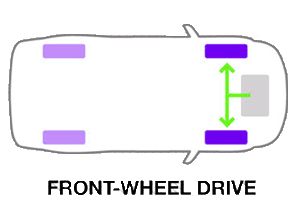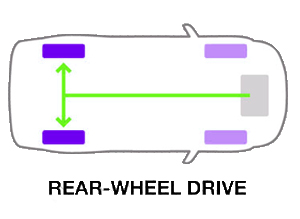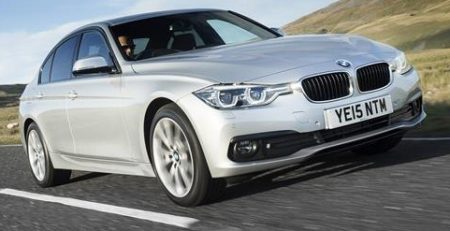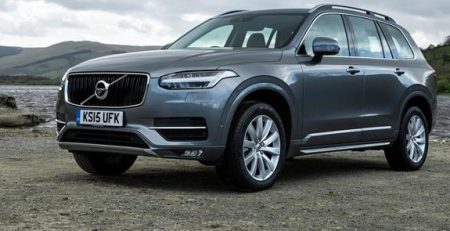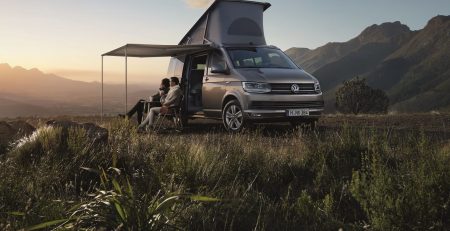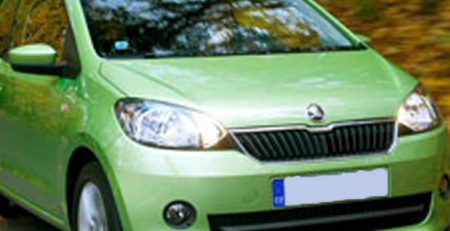Maximise resale value of your new BMW with these specs Specify you factory ordered car properly with a BMW configurator. Th read more
What is the Difference Between Front, Rear, Four and All-Wheel Drive?
Front, Rear, Four and All Wheel Drive
For those who aren't familiar with car buying, when people say front, rear, four, and all-wheel drive, it may not mean much.
But, when it comes to picking the right car for you it is a significant feature as they produce very different results on the road.
So what exactly are the differences between the four? At AutoeBid, we've taken some time to explain the advantages and disadvantages of each system. We've also given examples of models you will most likely see them in.
Front-wheel drive
Examples: Most small, cheaper cars are front wheel drive. Manufacturers like Ford, VW, Honda, Toyota have small cars with front wheel drive.
Most cars operate using the front-wheel drive system - a system which means the engine powers the two front wheels which pull the car, and adds to the car's grip of the road. The drive shaft doesn't extend to the rear of the car, allowing passengers more space in the back seats, increased boot capacity and better mileage against fuel consumption. In addition, if there is a traction control, it will limit wheel spin in severe weather conditions.
Advantages:
- Front-wheel drive provides good traction in most driving conditions
- Cheaper than the all- and rear-wheel drive options
- Holds the road better than rear-wheel drive cars in icy and snowy conditions - this is because the majority of the weight is over the the front wheels, which propels and steers the car, preventing it from dangerously sliding and fishtailing
- The increased traction that front-wheel drive provides means climbing icy inclines is possible
- Front-wheel drive cars help make progress in snow when travelling at a steady pace
- They are fuel efficient and more affordable cars
Disadvantages:
- In snowy or icy conditions the front wheels can slip which could result with the car being stuck
- Constant Velocity Joints (CVJ) tend to need replacing more frequently than in a rear-wheel drive vehicle
- Front-wheel drive cars have to simultaneously put power to the road and steer the car
- High powered cars can be difficult to control when they accelerate, which is caused by the front wheels jerking left or right. This is known as the 'torque steer', and is a reason why there are few performance cars available with front-wheel drive
- They are generally unable to make the same U turn as a similar sized rear-wheel driver car
What it means to you:
Most of the best selling cars are front-wheel drive because of the affordability, fuel efficiency and poor weather driveability they offer.
Rear-wheel drive
Examples: More expensive, larger cars tend to be rear wheel drive. BMW, Mercedes, Mazda (MX5), Jaguar (5 Type), Audi (R8), and Alpha Romeo (Giulia) are just a few examples.
A rear-wheel drive car spreads the weight more evenly from the front to rear. The front wheels only steer, so can perform a significantly sharper turn than a front-wheel drive car. This is the result of fewer components. Most sports cars and virtually all race cars are rear-wheel drive, and the weight distribution this aids handling and provides optimal driving performance.
Advantages:
- Better handling, balance on braking and cornering in dry conditions
- If you accidentally run over the curb in a rear-wheel drive car it is highly likely you won't damage anything (unlike with a front-wheel drive)
- Rear wheel drive accelerates in a straight line avoiding the torque steer
Disadvantages
- The driving wheel is situated at the back where the vehicle is not heavily weighted
- They perform their weakest in poor weather conditions, particularly rain and snow, even with traction control, which means it can result with the car fishtailing or sliding around dangerously. Rear-wheel drive car owners should weigh down the rear of the car to prevent sliding in the snow, and should accelerate slowly in a high gear, remembering to drive cautiously and steadily without making any sudden movements
- Rear-wheel drive means the car is pushed, unlike front-wheel drive which is pulled - this reduces the traction in bad weather conditions
- They are typically more expensive and less fuel efficient than front-wheel drive vehicles
What it means to you: They are less fuel efficient and more expensive, but provide optimal performance driving.
Four-wheel drive/All-wheel drive
Examples: Land Rover, Range Rover, Jeep, Nissan (Qashqai), Hyundai (I x35), Kia (Sportage). Audi (A6), BMW (X1, X3, X5), Volvo (S60), Honda (CR-V)
The usage of the terms varies between manufacturer. Off-roaders are most commonly described as four wheel drive, whereas car-based SUVs (like Audis) might be referred to as all-wheel drive. The main thing to look out for is Permanent versus Active systems. Permanent four-wheel drive cars (some Land Rover Defenders) can't function in a two-wheel drive mode. Active systems have more sophisticated sensors and software to maximise traction etc.
Permanent four wheel drive or active.
Permanent is where you can't turn off four wheel drive. While there are usually options to lock your differential for off-roading, or switch the gearbox into a lower range for more power.
Advantages:
- As a rule most systems have a low range locking differentials for extreme terrain, providing best traction in off-road conditions
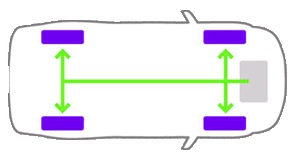
- Provides plenty of power, but maybe too much for first time car buyers.
Disadvantages:
- Inability to improve braking or cornering in snow
- Driving in locked four-wheel drive mode on clear roads can damage the driveline
- Has a wider turning circle when in four-wheel drive mode
- Adds weight and complexity to cars, making four-wheel drive more expensive than two-wheel drive models
Active is a computerised system. Usually it will automatically vary the power supplied to the front and rear wheels as and when needed. Some systems will remain in either front or rear-wheel drive mode until slip is detected, at which point the power is directed to all four wheels. Other systems continuously send the power to all four wheels. These systems can give the advantages of both front-wheel drive and rear-wheel drive.
Advantages:
- All-wheel drive cars are reliable and provide seamless acceleration in slippery conditions
- No driver intervention to engage
- Excellent traction in all weather conditions
- Provides increased grip and control of all road conditions particularly when climbing or descending
- Should you encounter loss of traction on one wheel then this would be made up by the other three
Disadvantages:
- All-wheel drive cars weigh heavier than both front and rear-wheel equivalents, which impacts on both the cars acceleration and fuel consumption
- The overall cost is higher due to more components which increases the weight and complexity of the vehicles, resulting in more parts needing to be serviced/replaced
- They do not handle as well as a 4x4 in extreme off-road conditions
What it means for you: They provide a lot of reliability, but it comes at a hefty price.

